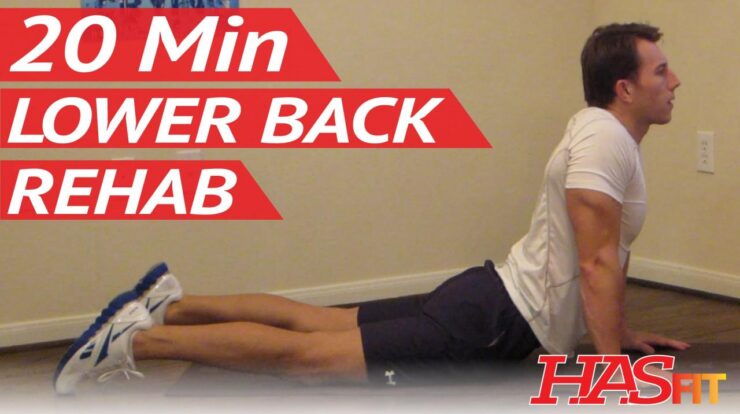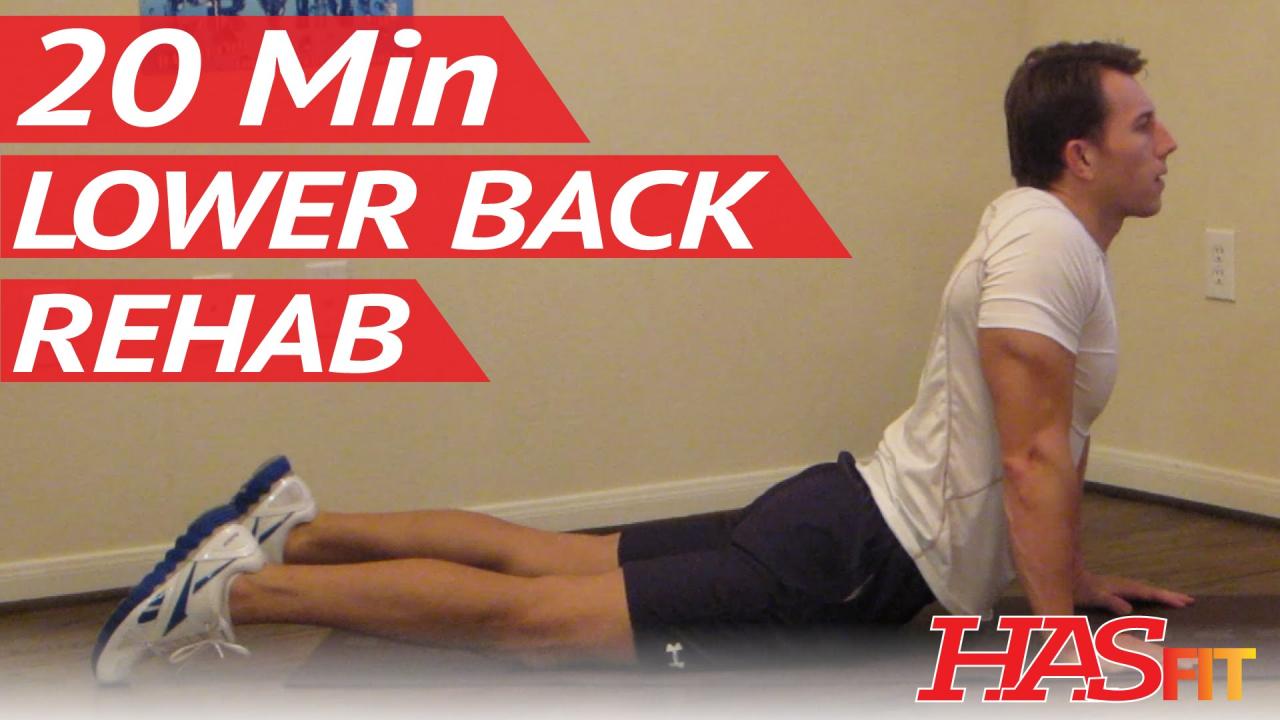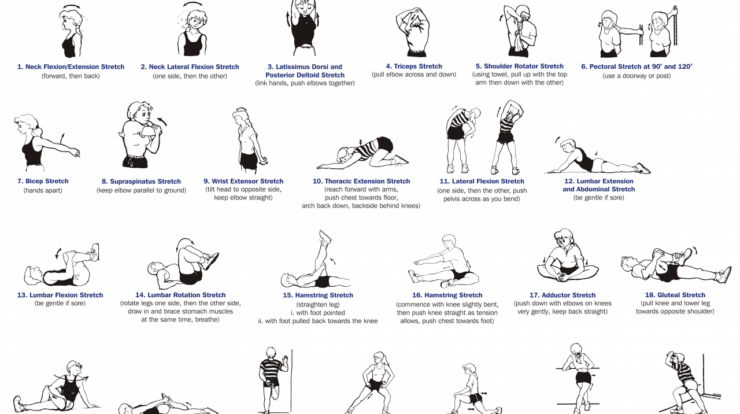
Lower back exercises at home offer a convenient and effective way to alleviate pain, strengthen muscles, and improve overall back health. This guide provides a comprehensive overview of lower back exercises, including types, benefits, and safety precautions, to help you design a personalized exercise plan that meets your specific needs.
From simple stretches to advanced strengthening exercises, this guide has something for everyone. Whether you’re a beginner or an experienced exerciser, you’ll find valuable information and practical tips to help you achieve your lower back health goals.
Lower Back Exercises at Home

Lower back pain is a common problem that can be caused by a variety of factors, including poor posture, muscle weakness, and injuries. While there are many different ways to treat lower back pain, one of the most effective is to do exercises that strengthen the muscles that support the lower back.
Stubborn lower back fat can be a challenge to eliminate. Explore a range of exercises for lower back fat that target this specific area and help you achieve your fitness goals.
There are many different types of lower back exercises that can be done at home. Some of the most common include:
- Pelvic tilts
- Knee-to-chest stretches
- Lower back extensions
- Planks
- Bird dogs
- Cat-cow pose
- Superman pose
When doing lower back exercises, it is important to use proper form and to listen to your body. If you experience any pain, stop the exercise and consult with a doctor or physical therapist.
Types of Lower Back Exercises
There are many different types of lower back exercises that can be done at home. Some of the most common include:
Stretches
- Knee-to-chest stretch
- Hamstring stretch
- Quad stretch
- Calf stretch
Strengthening Exercises
- Pelvic tilt
- Lower back extension
- Plank
- Bird dog
- Superman pose
Core Stability Exercises
- Bird dog with reach
- Plank with knee drive
- Side plank
- Russian twist
Exercise Plan and Progression
When starting an exercise program for lower back pain, it is important to start slowly and gradually increase the intensity and duration of your workouts over time.
A sample exercise plan for lower back pain relief might include:
- Week 1: Do 10-15 repetitions of each exercise, 2-3 times per day.
- Week 2: Increase the number of repetitions to 15-20, and continue doing the exercises 2-3 times per day.
- Week 3: Add a new exercise to your routine, and continue increasing the number of repetitions and frequency of your workouts.
It is important to listen to your body and rest when you need to. If you experience any pain, stop the exercise and consult with a doctor or physical therapist.
Celebrate the bond between mothers and their furry companions with snoopy happy mother’s day images. These adorable illustrations capture the special connection between mothers and their beloved pets.
Equipment and Modifications
Many lower back exercises can be done without any equipment. However, there are some exercises that may require the use of a resistance band, weights, or a stability ball.
As Mother’s Day approaches, find inspiration in a curated collection of happy mothers day wishes . Express your love and appreciation with thoughtful words that celebrate the unwavering bond between mothers and their children.
If you do not have access to any equipment, you can modify many exercises to make them easier. For example, you can do planks on your forearms instead of your hands, and you can do bird dogs without using a resistance band.
Advanced Lower Back Exercises
Once you have mastered the basic lower back exercises, you may want to try some more advanced exercises.
Maintaining a healthy back is essential for overall well-being. Discover effective back muscles exercises to strengthen your core and improve posture.
| Exercise | Benefits | Proper Execution |
|---|---|---|
| Weighted pelvic tilt | Strengthens the lower back and core muscles | Lie on your back with your knees bent and your feet flat on the floor. Place a weight on your lower abdomen and tilt your pelvis up towards your chest. Hold for 5 seconds and then slowly lower back down. |
| Glute bridge with band | Strengthens the glutes and hamstrings | Lie on your back with your knees bent and your feet flat on the floor. Place a resistance band around your knees and lift your hips up towards the ceiling. Hold for 5 seconds and then slowly lower back down. |
| Single-leg Romanian deadlift | Strengthens the hamstrings, glutes, and lower back | Stand with your feet hip-width apart and hold a dumbbell in one hand. Bend forward at the hips, keeping your back straight, and lower the dumbbell towards the floor. Keep your other leg straight and do not let your back round. |
Injury Prevention and Management
There are a few things you can do to prevent injuries when doing lower back exercises:
- Warm up before you start exercising.
- Use proper form and do not overexert yourself.
- Listen to your body and stop if you experience any pain.
- If you have any underlying health conditions, talk to your doctor before starting an exercise program.
If you do experience any pain, stop exercising and consult with a doctor or physical therapist.
Mothers play a pivotal role in shaping our lives, and on Mother’s Day, we express our love and gratitude to them. Explore a collection of happy mothers day wishes to find the perfect words to convey your heartfelt emotions.
Stretching and Flexibility, Lower back exercises at home
Stretching is an important part of any exercise program, and it is especially important for people with lower back pain.
| Stretch | Benefits | Proper Technique |
|---|---|---|
| Hamstring stretch | Stretches the hamstrings and lower back | Sit on the floor with your legs extended in front of you. Reach forward and try to touch your toes. Hold for 30 seconds. |
| Quad stretch | Stretches the quadriceps and lower back | Stand with your feet hip-width apart. Bend your right knee and grab your right ankle with your right hand. Pull your heel towards your buttocks. Hold for 30 seconds. |
| Calf stretch | Stretches the calves and lower back | Stand facing a wall with your feet hip-width apart. Step back with your right foot and bend your left knee. Keep your right heel on the floor and lean into the wall until you feel a stretch in your right calf. Hold for 30 seconds. |
Nutrition and Lifestyle Factors
In addition to exercise, there are a number of other things you can do to improve your lower back health, including:
- Maintaining a healthy weight
- Eating a healthy diet
- Getting enough sleep
- Improving your posture
- Reducing stress
By following these tips, you can help to reduce your risk of developing lower back pain and improve your overall health and well-being.
Final Summary

By incorporating lower back exercises into your routine, you can effectively manage pain, improve flexibility, and strengthen your core muscles. Remember to consult with a healthcare professional before starting any new exercise program, especially if you have any underlying health conditions.
With consistency and dedication, you can reap the benefits of lower back exercises and enjoy a healthier, pain-free back.
FAQ
How often should I do lower back exercises?
The frequency of your lower back exercises will depend on your fitness level and pain severity. Start with a few exercises a few times a week and gradually increase the frequency and intensity as your pain improves.
Can I do lower back exercises if I have a herniated disc?
It is important to consult with a healthcare professional before doing any lower back exercises if you have a herniated disc. They can assess your condition and recommend exercises that are safe for you.
What are some tips for preventing injuries when doing lower back exercises?
Always warm up before doing lower back exercises and cool down afterwards. Use proper form and avoid overexerting yourself. Listen to your body and stop if you experience any pain.





